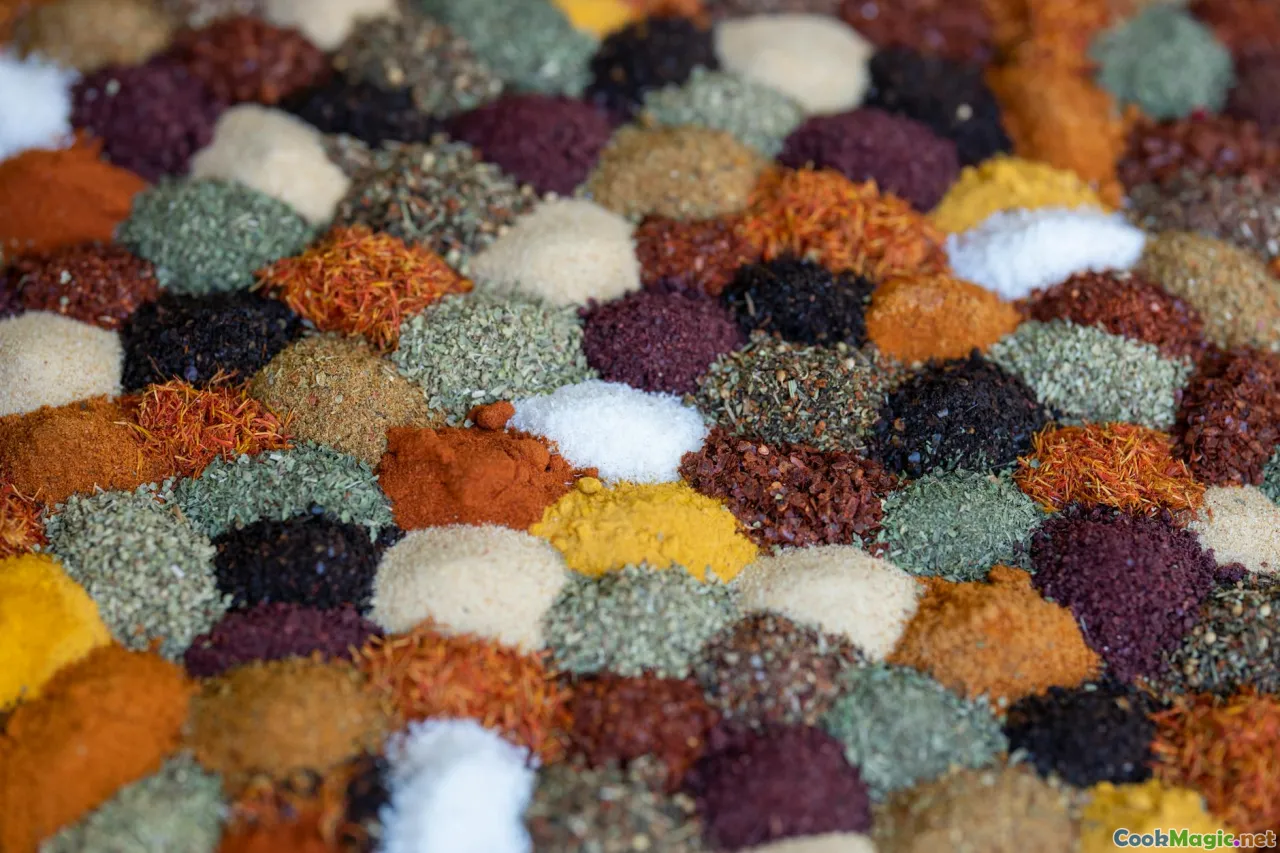The Key Spices in Traditional Armenian Cooking
8 min read Discover the essential spices that define Armenian cuisine, their rich history, and how they create the vibrant flavors of Armenia's traditional dishes. May 07, 2025 06:00
The Key Spices in Traditional Armenian Cooking
Imagine walking through the bustling markets of Yerevan, where the air is thick with the fragrant aroma of spices blending in every corner. The vibrant colors, the lively voices, and the tantalizing scents all tell stories of centuries-old traditions, of land and history intertwined in every dish. Armenian cuisine isn’t just about ingredients; it’s a sensory journey, a reflection of the country’s rich cultural tapestry. At the heart of this culinary heritage are the spices—those small but mighty elements that elevate humble ingredients into extraordinary dishes.
An Introduction to Armenian Spices: The Soul of the Kitchen
Armenian cooking is renowned for its bold, hearty flavors, achieved through a carefully curated palette of spices. Unlike some cuisines that emphasize subtlety, Armenian dishes often showcase a spirited combination of heat, acidity, and aromatic complexity. These spices are more than flavor enhancers; they are custodians of history, carriers of tradition, and symbols of regional identity.
The Historical Roots of Armenian Spices
Armenian cuisine has been shaped by its position at the crossroads of Asia and Europe, with trade routes bringing exotic spices from distant lands. The Silk Road, which passed through ancient Armenia, introduced the country to a variety of spices that have since become staples. Over centuries, Armenian cooks mastered the art of blending local herbs with imported spices, creating a unique flavor profile that is both robust and nuanced.
The Key Spices in Armenian Cooking
1. **Aleppo Pepper (Pul Biber)**Perhaps the most iconic spice in Armenian kitchens, Aleppo pepper lends a smoky, mildly spicy heat to a multitude of dishes. Its deep red hue and slightly wrinkled appearance are distinctive. This spice is not just about heat; it imparts a complex, fruity smoky flavor that elevates everything from grilled meats to stews and salads.Personal Reflection: I remember my first encounter with Aleppo pepper during a visit to a traditional Armenian restaurant in Gyumri. The chef sprinkled it generously over a lamb kebab, and the aroma alone was enough to make my mouth water. The subtle heat combined with the smoky undertone created a symphony of flavors that lingered long after the meal.
2. SumacKnown for its vibrant crimson color and tangy flavor, sumac is a cornerstone in Armenian seasoning. It adds a bright, lemony acidity that balances the richness of meats and dairy. Often sprinkled over salads, grilled vegetables, and even yogurt-based dishes, sumac introduces a refreshing tartness that awakens the palate.Cultural Note: In Armenian households, sumac is often used in a simple salad called Eetch, a cracked wheat and meat dish where its acidity cuts through the hearty ingredients.
3. **Cinnamon (Kneaz)**While cinnamon might evoke thoughts of sweet desserts elsewhere, in Armenian cooking, it plays a versatile role. Ground cinnamon is used in savory meat stews, pilafs, and even some pilaf-like rice dishes. Its warm, sweet aroma enriches the depth of meat broths and adds a comforting undertone to festive dishes.Personal Insight: I once prepared a traditional Armenian Khorovats (barbecue) where a dash of cinnamon was mixed into the marinade, imparting an unexpected but delightful aroma that complemented the smoky flavors of grilled lamb.
4. Dried Herbs and GreensWhile not spices in the strictest sense, dried herbs like dzhur (wild thyme), oregano, and mint are fundamental to Armenian flavoring. They are often used in combination with other spices to create layered flavors in soups, stews, and stuffing.Sensory Experience: The scent of dried dzhur wafting from a simmering pot evokes images of mountain villages and ancient hearths, anchoring Armenian dishes in their land’s rugged beauty.
The Art of Spice Blending in Armenian Cuisine
In Armenia, spices are often combined with herbs and other flavorings to create complex seasoning blends. For example, Khorovats marinades may include garlic, onions, paprika, and a touch of cinnamon, showcasing how spices can be harmoniously integrated.
Armenian cooks also rely on subtle techniques—such as toasting spices before adding them to dishes—to unlock deeper flavors and aromas. This practice enhances the natural qualities of the spices, making each bite a layered experience.
Regional Variations and Personal Touches
Different regions of Armenia emphasize particular spices based on local availability and tradition. The coastal areas near the Black Sea might favor more herbal and citrusy notes, while the mountainous regions prefer smoky and earthy flavors.
Personal family recipes often include unique spice combinations passed down through generations, making each dish a personal story of heritage and taste.
Spices in Armenian Celebrations and Daily Life
Spices play a pivotal role in Armenian festivities, from the aromatic Harissa porridge during Easter to the spiced meat fillings in Gata pastries. These spices are not just culinary ingredients but symbols of celebration, hospitality, and identity.
Final Thoughts: Embracing Armenian Flavors
Exploring Armenian spices offers more than just a taste experience—it’s an immersion into a land rich in history, resilience, and artistry. Each spice tells a story, each dish a chapter in the country's vibrant culinary saga.
Whether you’re recreating a traditional Khorovats, adding a dash of sumac to your salad, or experimenting with smoky Aleppo pepper in your own kitchen, embracing these flavors connects you to centuries of Armenian heritage.
So next time you reach for your spice jar, remember—you’re not just adding flavor; you’re carrying on a tradition that has united generations through the universal language of food.









